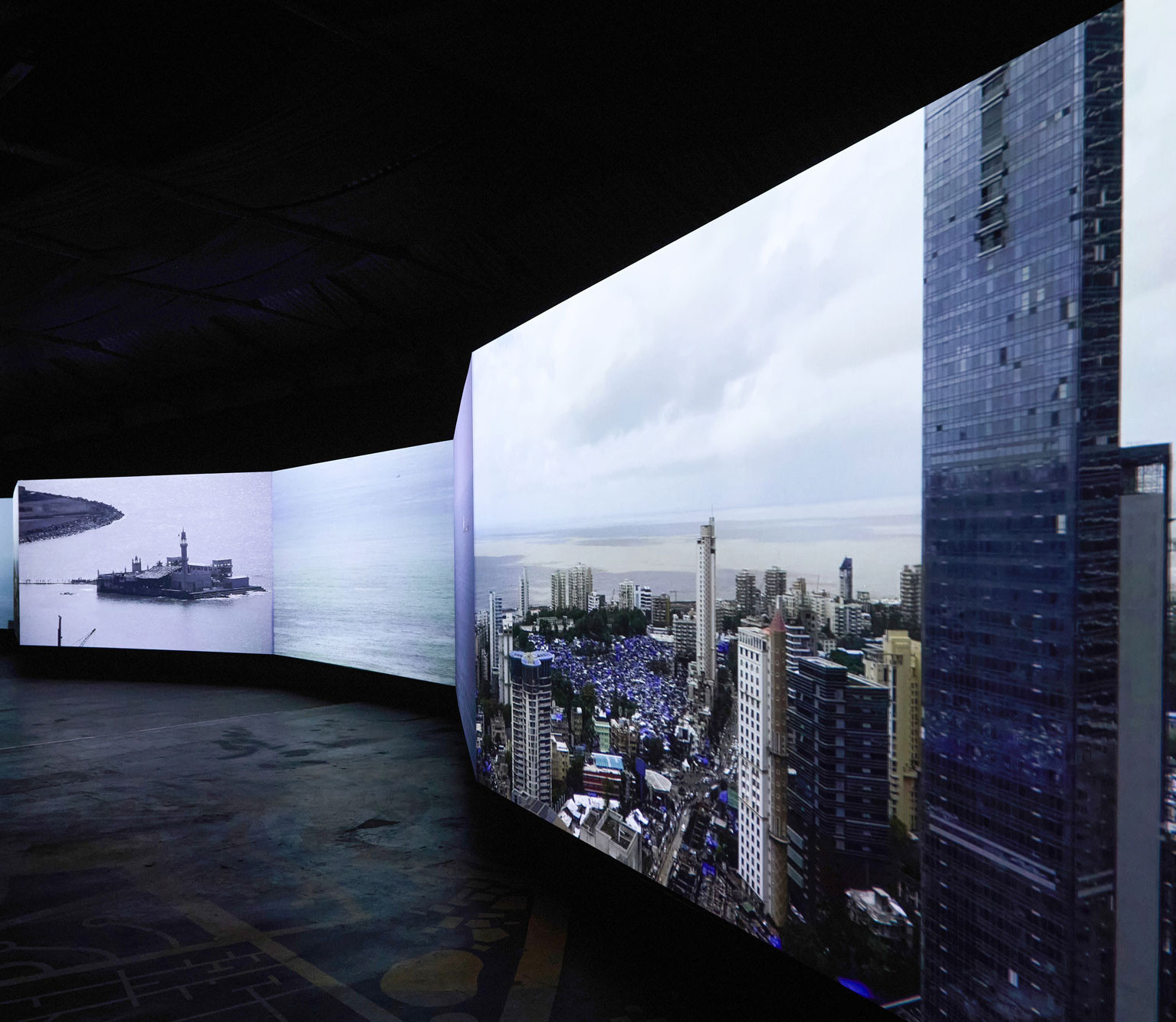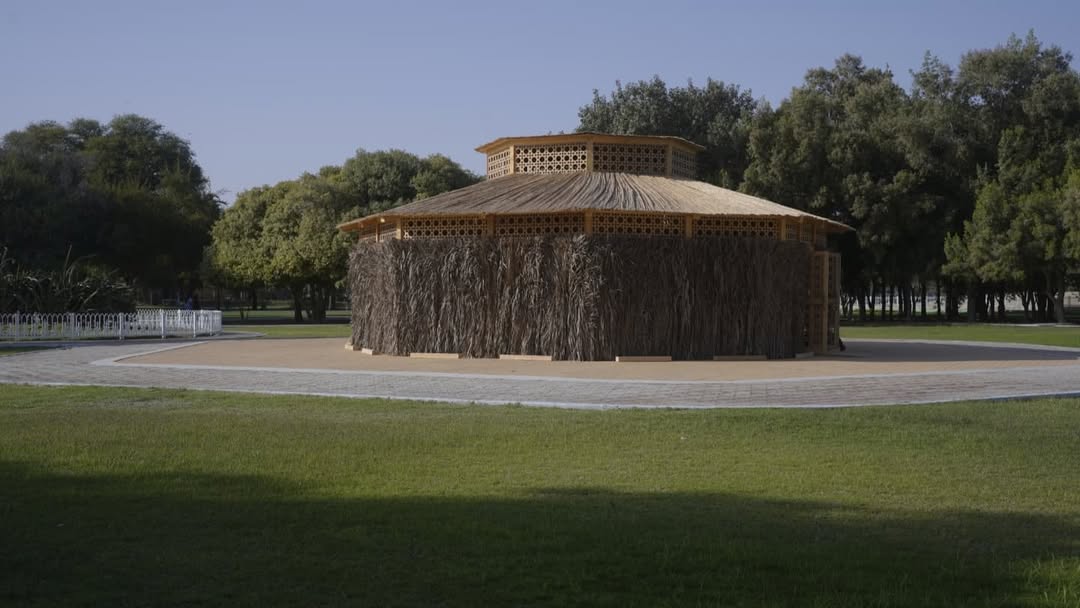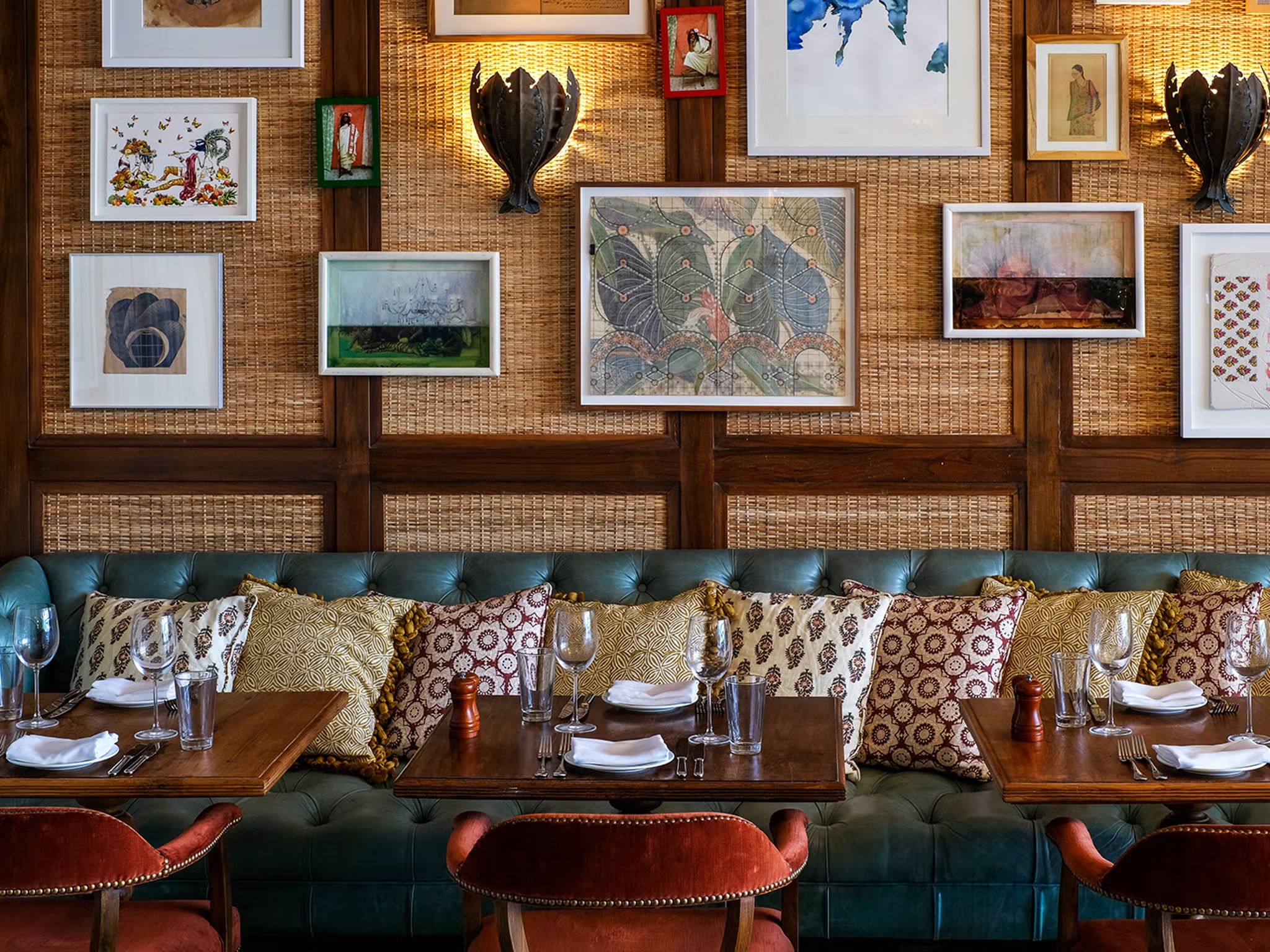Not all art hangs politely in a gallery. Some of it spills onto the streets, slips into public squares, and refuses to ask for permission. Across South Asia, artist collectives are turning creativity into a tool of resistance, challenging power structures, amplifying unheard voices, and asking the tough questions—often in ways that institutions wouldn’t dare.
Karachi LaJamia: The City as a Classroom
Karachi LaJamia, winners of the Asia Society’s 2025 Asia Arts Future (South Asia) Award, isn’t your typical art collective. No sleek white cubes, no polite artist talks, no detached theorizing about urban decay over wine and cheese. Instead, this duo—Shahana Rajani and Zahra Malkani—has spent the last decade taking their work to the streets (sometimes literally), embedding themselves in the communities most affected by Karachi’s relentless march towards “progress.”
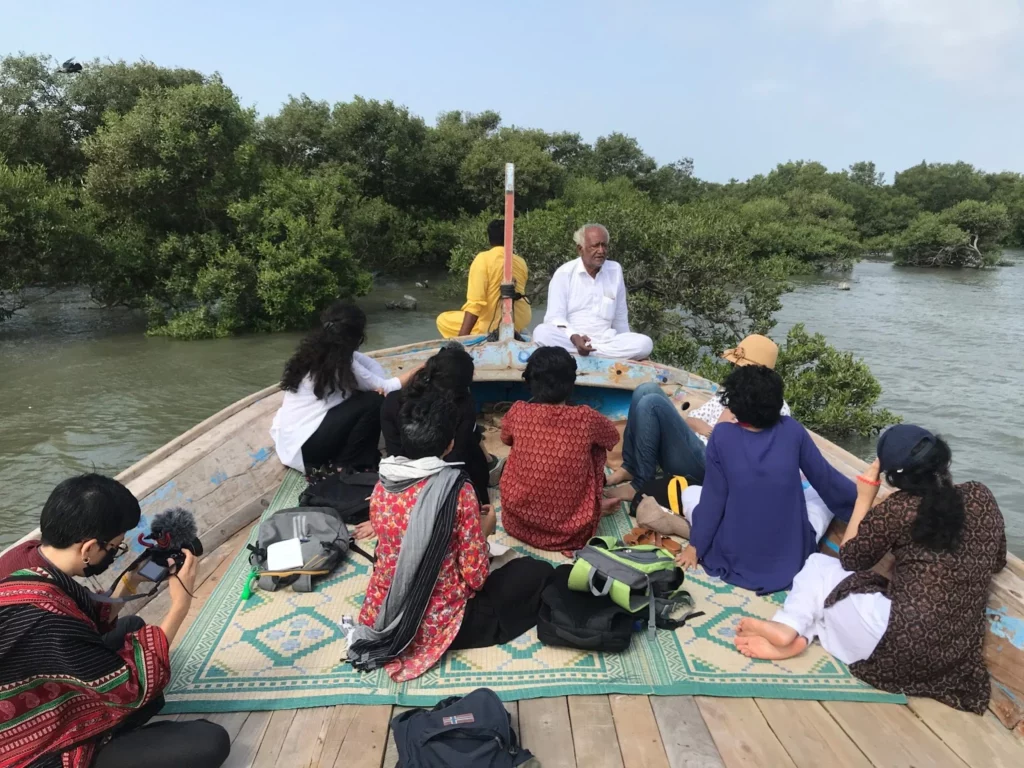
Artists of House of Kal Karachi at a workshop with Karachi LaJamia (Karachi Anti-
University), 2021. Image courtesy Fiza Khatri. Source: Artnet.
Formed in 2015, Karachi LaJamia functions as a moving classroom, a research lab, and an act of resistance rolled into one. They use site-specific courses, experimental pedagogy, and deep engagement with local histories to examine how power operates through urban development.
And let’s be honest: in cities like Karachi, power loves to disguise itself as progress. The promise of global-city status often comes at a cost—displaced communities, erased histories, and landscapes rewritten by capital. Karachi LaJamia pulls at these threads, questioning who gets to shape the city and who gets pushed to its edges. Their work doesn’t just document these shifts; it intervenes in them, creating spaces for critical dialogue, knowledge-sharing, and solidarity-building across South Asia’s ever-changing urban terrain.
CAMP: Subverting Screens, Rewriting Narratives
Since 2007, this Mumbai-based collective has been flipping the script on video, film, and electronic media, treating them less like passive tools and more like sites of inquiry, resistance, and—dare we say—mischief. Their show at MoMA, Video After Video, makes a strong case for why their approach is both timely and essential.

CAMP. Bombay Tilts Down. 2022. Loop, 6+1 screen environment from single-point CCTV video, 13 min. Installation view, Sassoon Docks, Mumbai, 2024. Image courtesy the artists
Take their project Khirkeeyaan, for instance. Before FaceTime, before Zoom fatigue, before our lives became an endless parade of lagging video calls, CAMP turned everyday television sets in New Delhi’s Khirkee neighborhood into real-time conversation portals. Then there’s From Gulf to Gulf to Gulf, a feature-length film stitched together from cell phone footage shot by sailors across the Western Indian Ocean. The result? A striking, deeply human counterpoint to all those slick, corporate drone shots of global trade routes. And finally, Bombay Tilts Down—a work that turns a high-rise CCTV camera into an unwitting cinematographer, capturing the city’s shifting landscape from above.
CAMP doesn’t just observe power; they poke at it, reroute it, and sometimes, hand the mic (or in this case, the camera) to those left out of the frame.
Anga Art Collective: From Assam to Abu Dhabi
Currently showing at the 16th Sharjah Biennale and the Abu Dhabi Public Art Biennial, this Assam-based collective is all about pushing boundaries, challenging norms, and weaving local histories into global conversations.
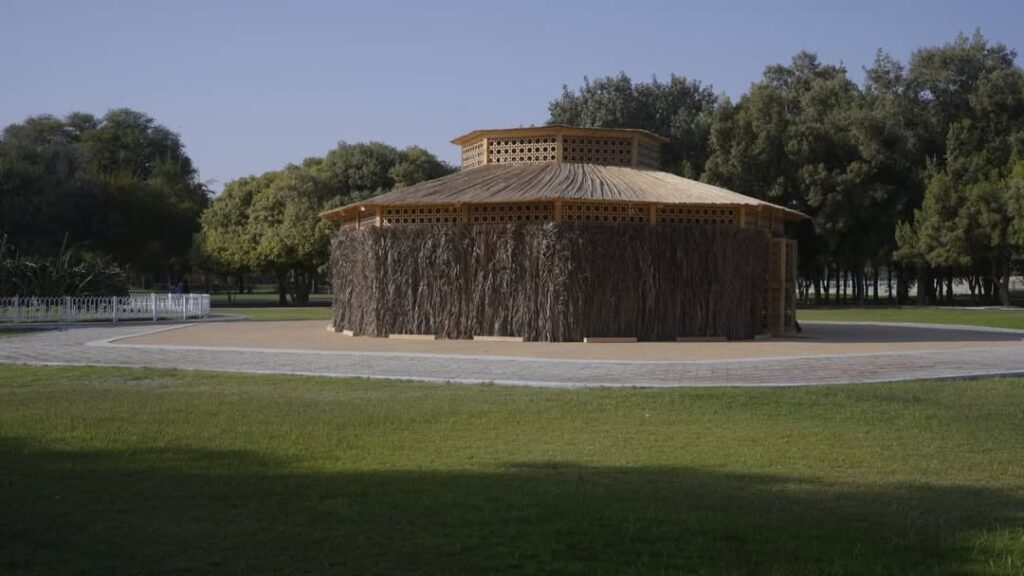
Anga Art Collective, Migration Granary, 2024 -2025, From ‘Granary, 2022-ongoing. At Public Art Abu Dhabi Biennial 2024-2025. Source: Anga Art Collective.
Anga Art Collective, Migration Granary, 2024 -2025, From ‘Granary, 2022-ongoing. At Public Art Abu Dhabi Biennial 2024-2025. Source: Anga Art Collective.
Anga Art Collective’s latest project, আৱতৰীয়া বতাহ (Unseasonal Wind), at the Old Al Jubail vegetable market in Sharjah, is less of a traditional exhibition and more of a sensory deep-dive into agrarian histories, connecting Assam, Bihar, and Sharjah in ways that feel urgent and poetic. Also in Sharjah are works like Banihaar (which pays tribute to the landless farm worker) and The Full Moon, turning forgotten narratives into immersive experiences.
Meanwhile, Migration Granary (2024–25), a part of the Abu Dhabi Public Art Biennial, isn’t just an installation—it’s an act of resistance. Designed as a contemplative space in Hili Archaeological Park, it critiques displacement and the alienation of modern infrastructure, offering a quiet but powerful meditation on migration.
Whether spotlighting vanishing knowledge systems or amplifying the voices of those often unheard, Anga Art Collective is reshaping artistic practice in Northeast India.
SAHMAT: The Art of Resistance
If art is a weapon, SAHMAT has wielded it with precision for over three decades. Born out of rage and resilience in the wake of Safdar Hashmi’s assassination, the collective has turned the very tools of repression—silencing, erasure, and fear—into a defiant language of creativity. From street plays and protest music to exhibitions that challenge majoritarian narratives, SAHMAT has been an unrelenting voice against sectarianism, communalism, and cultural homogenization.
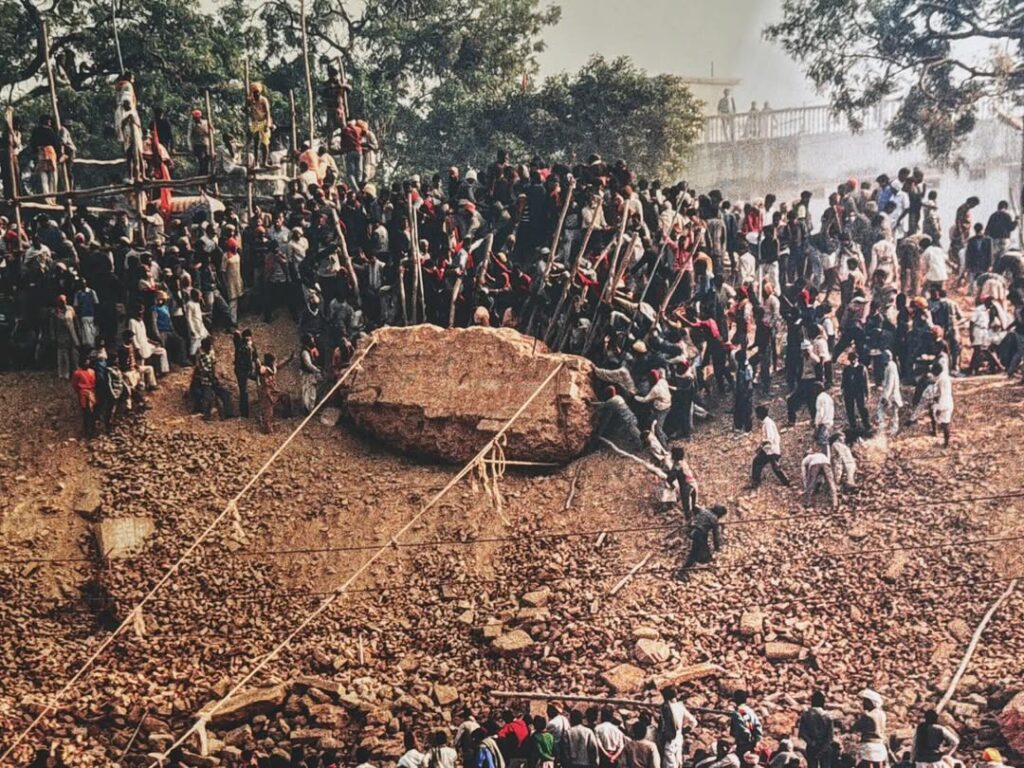
Pablo Bartholomew, ‘The Morning After, Babri Masjid, Ayodhya’, at the exhibition ‘Moments in Collapse’ at Jawahar Bhawan, 2024. Photo: Anica Mann. Source: Safdar Hashmi Memorial Trust (SAHMAT).
Last year, SAHMAT’s Moments in Collapse at Jawahar Bhawan brought together artists whose works confronted India’s shifting political landscape ahead of the General Elections. Featuring work by artists such as Shilpa Gupta, Vikrant Bhise, Pablo Bartholomew and Shailesh BR, that addressed populism, media discourse, historical memory, and constitutional values, the exhibition’s location (directly across from the Ministry of Culture) served as a quiet yet powerful act of resistance.
The Power of Artist-Run Initiatives
Alongside these provocateurs, a network of artist-run initiatives is redefining the creative landscape in South Asia. Collectives like Theertha International Artists Collective in Colombo, KHOJ International Artists’ Association in Delhi, Britto Arts Trust & Samdani Art Foundation in Dhaka and Vasl Artists’ Collective in Karachi prove that the most vital art is happening outside the art market. Unlike commercial galleries or museums, these spaces operate on radically different terms—prioritizing experimentation, collaboration, and socially engaged practices over market trends.
Why Rebel Art Collectives Matter
In a time when surveillance capitalism, cultural censorship, and political polarization are tightening their grip, art collectives & institutions like these remind us that resistance doesn’t have to be loud—it just has to be persistent. They challenge the idea that art should exist in isolation, divorced from the messy realities of the world. Instead, they embed themselves in communities, histories, and movements, refusing to let power operate unchecked.
